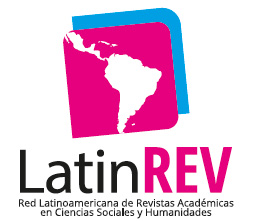The identification of Argentine and Spanish youths with fictional characters
Abstract
Faced with a dearth of empirical investigations on youth identification with characters from fiction and media entertainment, this study uncovers how this identification acts as an explanatory variable in understanding the enjoyment of audiovisual fiction. To achieve these results, data on university youths in Argentina and Spain have been correlated. Also, cognitive evaluation has been analyzed in order to verify the degree of reflection and cognitive elaboration produced by an episode of the proposed fictional product. This study is relevant for an understanding of audience behavior and response to audiovisual entertainment.
Downloads
References
Bandura, A. (1969). Social learning theory of identificatory process. En: Gosling D. A. (ed.): Handbook of socialization theory and research (p. 213-262). Chicago: Rand McNally.
Bryant, J. & Zillmann, D. (eds.) (1991). Responding to the screen: reception and reaction processes (p. 135-167). Hillsdale, NJ: Lawrence Erlbaum Associates.
Cohen, J. (2001). Defining identification: a theoretical look at identification of audiences with media characters. Mass Communication & Society, 4, 245-264.
Cohen, J. (2006). Audience identification with media characters. En: Bryant, J. & Vorderer, P. (eds.). Psychology of entertainment (p. 183-197). Mahwah, NJ: Lawrence Erlbaum Associates.
De Wied, M.; Zillmann, D. & Ordman, V. (1994). The role of empathic distress in the enjoyment of cinematic tragedy. Poetics, 23, p. 91-1006.
Eyal, K. & Rubin, A. M. (2003). Viewer aggression and homophily, identification and parasocial relationships with television characters. Journal of Broadcasting & Electronic Media, 47, p. 77-98.
Feilitzen, C. & Linne, O. (1975). Identifying with television characters. Journal of Communication, 25, p. 51-55.
Hoffner, C. & Buchanan, M. (2005). Young adults’ wishful identification with television characters: the role of perceived similarity and character attributes. Media Psychology, 7 (32), p. 5-351.
Hoffner, C. & Cantor, J. (1991). Perceiving and responding to mass media characters. En: Bryant, J. & Zillmann, D. (eds.). Responding to the screen: reception and reaction processes (p. 63-101). Hillsdale, NJ: Lawrence Erlbaum Associates.
Hoffner, C. & Buchanan, M. (2005). Young adults’ wishful identification with television characters: the role of perceived similarity and character attributes. Media Psychology, 7, p. 325-351.
Igartua, J. J. & Muñiz, C. (2008). Identificación con los personajes y disfrute ante largometrajes de ficción: una investigación empírica. Comunicación y sociedad, 21 (1), p. 25-52.
Igartua, J. J. & Páez, D. (1997a). El cine sobre la Guerra Civil Española: una investigación sobre su impacto en actitudes y creencias. Boletín de Psicología, 57, p. 7-39.
Igartua, J. J. & Páez, D. (1997b). Art and remembering traumatic collective events: the case of the Spanish Civil War. En: Pennebaker, J., Páez, D. & Rimé, B. (eds.). Collective memory of political event: social psychological perspectives (p. 79-101). Mahwah, NJ: Lawrence Erlbaum Associates.
Igartua, J. J. & Páez, D. (1998). Fiabilidad y validez de una escala de empatía e identificación con los personajes. Psicothema, 10 (2), p. 423-436.
Klimmt, Ch.; Hefner, D. & Vorderer, P. (2009). The video game experience as “true” identification: a theory of enjoyable alterations of players’ self perception. Communication Theory, 19, p. 351-373.
Metz, C. (1982). The imaginary signifier: psychoanalysis and cinema. Bloomington, IN: Indiana University Press.
Moyer-Gusé, E. (2008). Toward a theory of entertainment persuasion: explaining the persuasive effects of entertainment-education messages. Communication Theory, 18, p. 407-425.
Sánchez Castillo, S. (2012). Valores morales, empatía e identificación con los personajes de ficción: el
universo representativo de “Cuéntame cómo pasó” (TVE). Revista Mediterránea de Comunicación, 3 (2), p. 83-100.
Sánchez Castillo, S. & Fabbro de Nazábal, G. (2013). Ficción audiovisual y procesos de percepción en estudiantes universitarios de Argentina y España: una investigación empírica. Historia y Comunicación Social, 18 (nº esp), p. 677-687.
Slater, M. D. & Rouner, D. (2002). Entertainment-education and elaboration likelihood: understanding the processing of narrative persuasion. Communication Theory, 2, p. 173-191.
Soto-Sanfiel, M.; Aymerich-Franch, L. & Xavier Ribes, F. (2010). Impacto de la interactividad en la identificación con los personajes de ficción. Psicothema, 22 (4), p. 822–827.
Turner, J. R. (1993). Interpersonal and psychological predictors of parasocial interaction with different television performers. Communication Quarterly, 41, p. 443-453.
Zillmann, D. (2000). The coming of media entertainment. En: Zillmann, D. & Vorderer, P. (eds.). Media entertainment: the psychology of its appeals (p. 1-20). Mahwah, NJ: Lawrence Erlbaum Associates.
Zunzunegui, S. (1989). Pensar la imagen. Cátedra. Madrid.
Copyright (c) 2014 Sebastián Sánchez Castillo, Gabriela Fabbro de Nazábal

This work is licensed under a Creative Commons Attribution-NonCommercial 4.0 International License.
The authors retain the copyright and guarantee the journal the right to be the first publication of the work. In case that a translation of the article already published in Austral Comunicación can be published in another journal, it is requested to record the original publication in the translated version.
The license used is CC BY-NC-SA, which allows sharing (copying and redistributing the material in any medium and format) and adapting (remixing, transforming and building on the material) under the following terms: attribution (acknowledge authorship) and non-commercial (the material cannot be used for commercial purposes). Update: February 1, 2022.
Austral Comunicación allows the author (s) to retain the publication rights without restrictions.











































